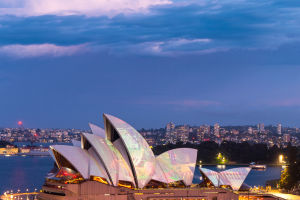Photographing city night scenes presents a unique set of challenges and rewards.
The interplay of artificial light, reflections off wet streets, and the dynamic movement of people and vehicles create a vibrant tapestry that can be captured in countless ways.
One of the most critical elements in night photography is the shooting angle. The choice of angle can transform a mundane scene into a visually compelling image, highlighting the architectural grandeur, atmospheric ambiance, or bustling energy of urban life. This article explores various shooting angles that can enhance city night photography, providing tips and insights for capturing the magic of the city after dark.
Eye-Level Shots: Capturing the Essence of Urban Life
Eye-level shots are the most straightforward angle in city night photography, providing a natural perspective that closely mimics how we perceive our surroundings. This angle is particularly effective for capturing street scenes, allowing viewers to relate to the hustle and bustle of city life. By positioning the camera at eye level, photographers can document the interplay of light and shadow on building facades, the glow of neon signs, and the movement of people.
To add depth and interest to eye-level shots, consider incorporating leading lines such as streets, sidewalks, or rows of lights. These lines draw the viewer’s eye into the scene, creating a sense of depth and perspective. Additionally, framing elements like archways, windows, or trees can help focus attention on specific areas of the composition.
Low Angle Shots: Emphasizing Grandeur and Scale
Shooting from a low angle, also known as a worm's-eye view, can make ordinary scenes appear dramatic and imposing. This perspective is particularly effective for highlighting the architectural features of tall buildings and monuments. By positioning the camera close to the ground and pointing it upwards, photographers can exaggerate the height and grandeur of structures, creating a sense of awe.
Low angle shots are also excellent for capturing reflections on wet surfaces. After a rain shower, puddles on the street can mirror the city lights, adding a layer of complexity and beauty to the image. Photographers can use these reflections to create symmetrical compositions, enhancing the visual impact of the scene.
High Angle Shots: Showcasing the Cityscape
High angle shots, often taken from rooftops, balconies, or other elevated positions, provide a broad view of the cityscape. This bird’s-eye perspective is ideal for capturing the overall layout of the city, including the intricate network of streets, the clustering of buildings, and the flow of traffic. High angle shots can convey the vastness of the urban environment and the density of city life.
To achieve striking high angle shots, photographers should look for vantage points that offer an unobstructed view of the city. Timing is crucial; capturing the city during the blue hour, when the sky is a deep blue and city lights are beginning to illuminate, can create a beautiful contrast between natural and artificial light. Long exposure times can be used to capture light trails from moving vehicles, adding dynamic elements to the composition.


